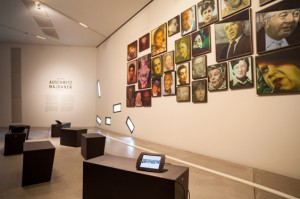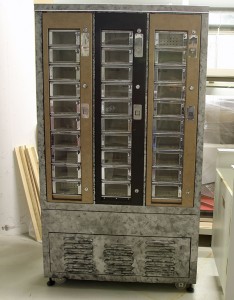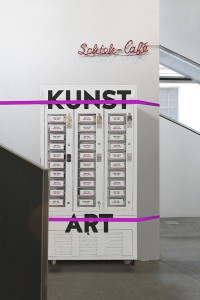On Behind-the-scenes Labor in the Cultural Economy

“Translators create universal literature.” José Saramago, Nobel Prize Winner for Literature 1998
© VdÜ (Germany’s Union of Literary Translators), design: Christian Hoffmann
Today is Giornata mondiale della traduzione, Międzynarodowy Dzień Tłumacza, Journée mondiale de la traduction, Uluslararası Çeviri Günü or Día Internacional de la Traducción—which is to say, International Translation Day, an occasion established in 1991 by the Fédération Internationale des Traducteurs (FIT: International Federation of Translators) in order to raise public awareness of the cultural impact of the wordsmith’s trade. 30 September is the anniversary of the death in 420 CE of Hieronymus, who translated the Hebrew Bible into Latin. Since ancient times translation has influenced the target language in question, and in the globally networked world of today it is our constant companion. Germany’s Union of Literary Translators (VdÜ) puts it in a nutshell: “Wherever words have been spoken, written, read, or even sung, translators have had a finger in the pie, and indeed they still do; and it is thanks to them that the whole world is at home in its own language.” → continue reading

Area on the Majdanek Trial in the permanent exhibition
© Jewish Museum Berlin, photo: Alexander Zuckrow
Forty-four portraits have been mounted in the permanent exhibition over the last few weeks. They are a series of paintings by Minka Hauschild, called “Majdanek Trial Portraits,” and they show the participants of the Majdanek Trial, that took place at the regional court in Dusseldorf from 26 November 1975 until 30 June 1981. Standing in front of the wall of portraits, viewers are left to wonder: “Who is who, here?” The paintings themselves don’t reveal whether the subject was a former prisoner or an SS officer. Some portraits are realistic, but others seem distorted or blurred to the point of being unrecognizable. All of the people portrayed appear to have been damaged in some way. The portraits are deeply disturbing.
Our visitors can find out on iPads lying on the benches nearby whether a given painting depicts a judge, a lawyer for the defense, a witness, or a defendant. Each individual’s role in the Majdanek trial is described here and insight is provided into their biography as well as – where the sources permit – their own perception of the proceedings. → continue reading

This is what the vending machine looked like originally.
© Jewish Museum Berlin, photo: Gelia Eisert
Usually a museum is a place where you can contemplate art from a safe distance. Today, with the mounting of our Art Vending Machine in our permanent exhibition, that will change: now you can put 4 euros in the coin slot, and own a piece of art from the museum!
If you’re imagining a high-tech machine that produces art, when you read the words “Art Vending Machine,” or something like a soda machine, where you can pick and choose from a selection, you’re on the wrong track. Our Art Vending Machine has a supply of small-scale artworks that were created by artists especially for it.
Since a device of this kind isn’t commercially available, I bid online for an old vending machine from the 1970s. I found one in a sports center in the Rhineland-Palatinate region of Germany and had it transported to us from there.

After its modification, the vending machine should look like this.
© Design: Hanno Dannenfeldt
Following the machine’s arrival, the graphic designer Hanno Dannenfeldt worked on a concept for reconfiguring it, since it’s meant to be not only a container for artworks tucked into all the little shelves, but itself part of the exhibition. The design, called “Hanging,” dresses the automat in a simple white coat of paint with an eye-catching black inscription. It’s strung up on the wall with pink slackline cables.
The next steps of this procedure raised some unusual questions for me as a museum employee: → continue reading



